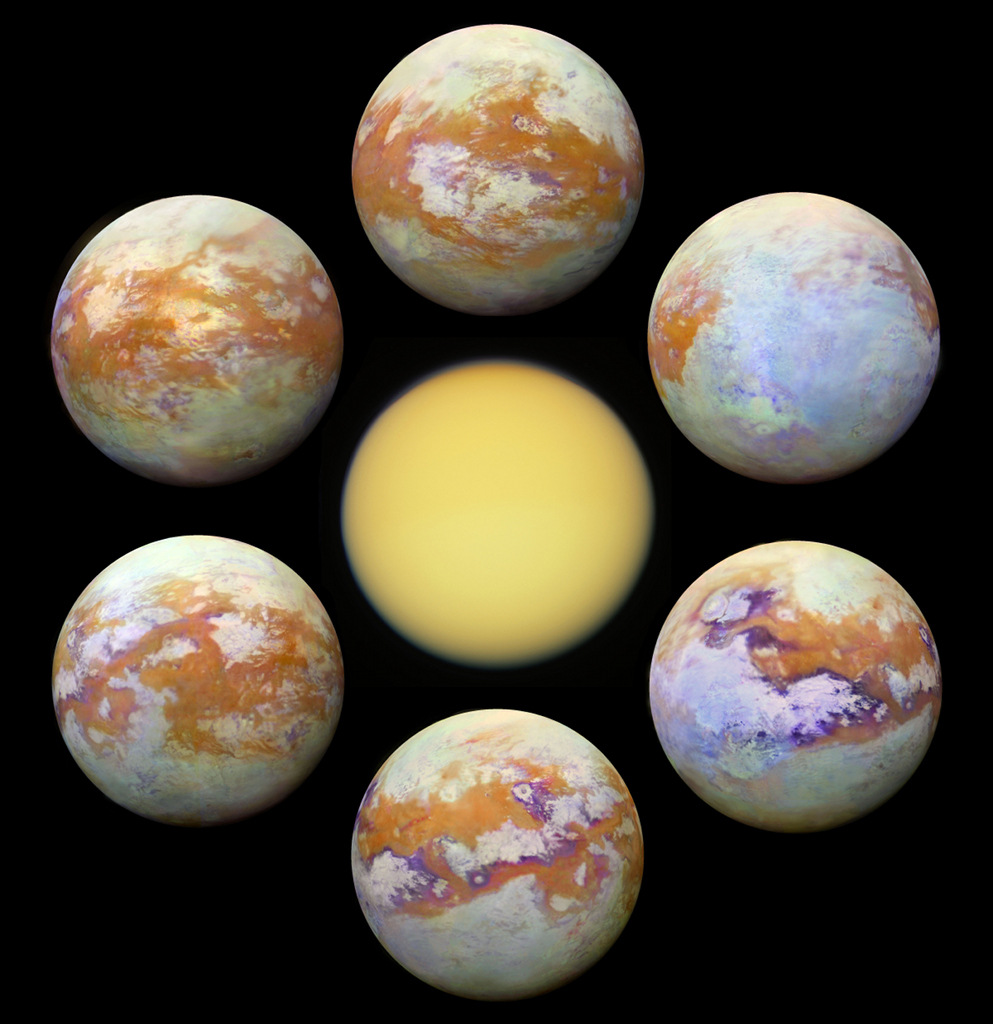2023年3月31日
Seeing Titan
Image Credit: VIMS Team, U. Arizona, U. Nantes, ESA, NASA
Explanation: Shrouded in a thick atmosphere, Saturn’s largest moon Titan really is hard to see. Small particles suspended in the upper atmosphere cause an almost impenetrable haze, strongly scattering light at visible wavelengths and hiding Titan’s surface features from prying eyes. But Titan’s surface is better imaged at infrared wavelengths where scattering is weaker and atmospheric absorption is reduced. Arrayed around this visible light image (center) of Titan are some of the clearest global infrared views of the tantalizing moon so far. In false color, the six panels present a consistent processing of 13 years of infrared image data from the Visual and Infrared Mapping Spectrometer (VIMS) on board the Cassini spacecraft orbiting Saturn from 2004 to 2017. They offer a stunning comparison with Cassini’s visible light view. NASA’s revolutionary rotorcraft mission to Titan is due to launch in 2027.
Tomorrow’s picture: seriously
透视土卫六
图像提供: VIMS Team, U. Arizona, U. Nantes, ESA, NASA
说明: 包裹着厚重大气的土星最大卫星土卫六,非常难窥其全貌。土卫六高层大气的悬浮微粒,形成几乎无法透视的雾霾,并强烈散射可见光,因此让可见光波段的观测难以窥见其表面特征。不过红外光受到的散射较弱,大气吸收也较少,能够取得较佳的土卫六表面影像。环拱在中心可见光影像周围的红外光土卫六照片,即是这颗迷人的卫星截自目前最清晰的红外光影像。这6张与卡西尼号可见光影像形成强烈对比的假色照片,建构自卡西尼号飞船上的可见光及红外光成像光谱仪(VIMS),在13年(2004年到2017年)期间绕行土星时所取得的影像数据。美国国家航空航天局突破性的无人土卫六探测任务,将在2027年发射升空。
明日的图片: seriously



